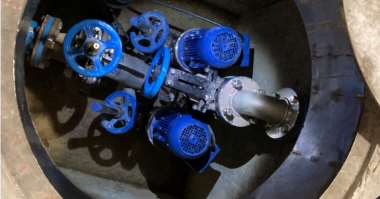Author: Brandon Schaner
No Reliability Plan survives contact with the Culture.
My spin on the phrase “No Battle Plan survives contact with the Enemy”. In this case, the ‘battle plan’ is that of trying to strategize an effective system for improving reliability and operational efficiency of a facility, and ‘Culture’ is the ‘enemy’.
“Each system is perfectly designed to give you exactly what you are getting today.” ~W. Edwards Deming
As usual, Mr. Deming nails it. So, what’s under the surface of this statement ? Well, the problem resides in the “We’ve always done it this way” mindset.
Many facility managers realize the enormous costs associated with unreliable assets and a poor operational facility, and further realize the benefits of implementing reliability improvements to correct these issues. However, this becomes the typical ‘ounce of prevention being worth the pound of cure’ scenario.
I recently had a chat with a client who made an outstanding statement: “We need to stop celebrating the crew who got called in on a weekend and worked around the clock to get the facility back online after suffering a preventable failure.”
This is a powerful statement, and at face value it may seem a bit insulting to the people who dropped everything and missed out on a nice, relaxing weekend to instead come into their facility to get it back online; after all, didn’t they go above and beyond ?
Of course they did. But what about the people who put forth effort to identify issues early on, made a ‘battle plan’ for dealing with these impending issues, all of which could have prevented the need to ruin relaxing weekends, and just as importantly, prevented the production loss and substantial costs for responding to a preventable crisis ? Where is their celebration ?
STEPPING OVER DOLLARS TO PICK UP PENNIES
A major part of ‘culture change’ is that facility managers need to face the inconvenient truths about how much poor reliability actually costs them. No one ever wants to look at the ‘big picture’, preferring to look at things at a highly granular viewpoint.
In nearly all cases, the costs associated with reacting to one preventable catastrophe would have easily paid for a high-quality reliability services provider by a factor of two times or more. This is a classic case of knowing the price of everything, but the value of nothing.
Many facility managers are quick to look at their operating budget for any given year, weigh the costs of implementing a reliability program against it and say “too expensive…we need the budget money for emergency repairs, etc.“ This mentality guarantees failure without even trying !
BUILDING RELIABILITY
Developing a reliable operation can’t be done with a band-aid approach. An entire organization needs to be on-board with the realities of moving from trepidation of the next looming failure to the confidence of having control over their assets.
This is what I call ‘Building Reliability’, and it doesn’t mean purchasing the latest reliability systems, and promptly thinking that the facility’s assets are going to immediately come into submission. It’s a long-term goal that needs to be ingrained in the culture of the facility operators.
While the culture has evolved over the years to accept reliability-based technologies such as vibration analysis, infrared, oil sampling, ultrasound, etc. as worthy tools to provide advance planning of developing failures, ultimately these technologies are still being used as a ‘reactive device’; simply being used to give an earlier warning of impending faults versus waiting for a failure to occur.
True Reliability starts at the beginning- ensuring your assets are installed correctly (alignment, placement, etc.), then verified for proper operational condition (quality acceptance testing) and finally maintained properly (corrective balancing, correct lubrication methods, etc.). Only then are the previously noted technologies useful for plotting the operational condition, lifespan and detection of the random failures to avoid unplanned downtime.
The tools to improve reliability exist. Numerous case studies proving the effectiveness of reliability exist. Unplanned failures can be reduced to nearly zero. The greatest Reliability Asset a facility can have costs nothing, because it can’t be bought- it’s the matter of changing culture to a sustainable, reliability-based outlook.
About the Author: Brandon Schaner is Director of Reliability Services for SRT Corporation, with over 22 years of experience implementing and providing Reliability Services & Programs across multiple commercial & industrial facilities worldwide.





Comments